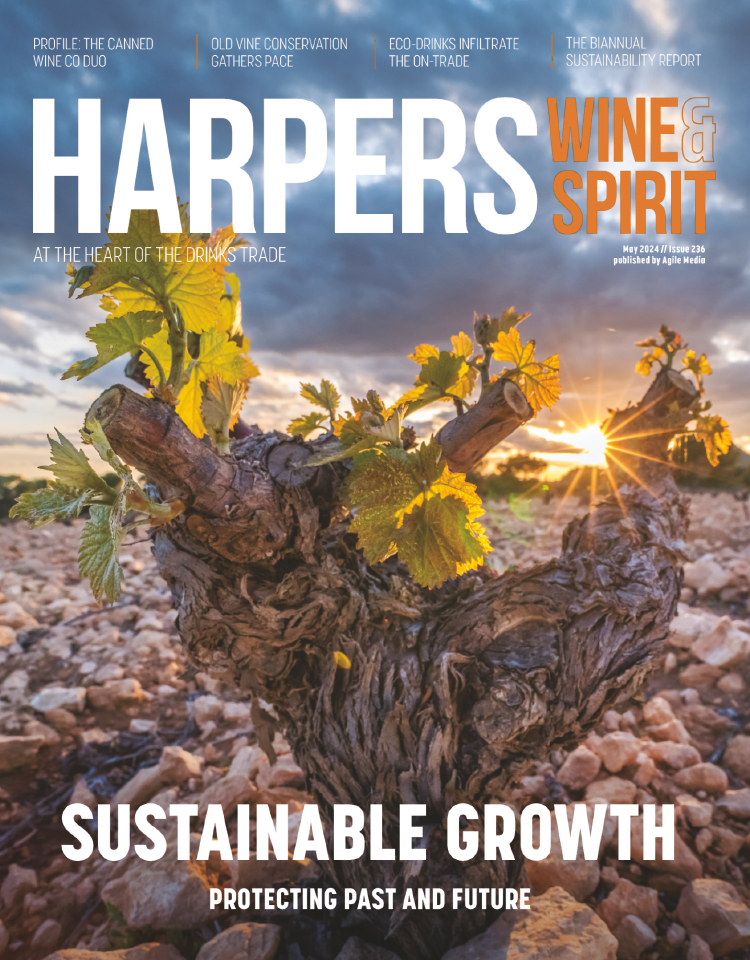Growing pains
A quick look at the statistics, and where's the problem? In the UK off-trade, Australia has the number-one spot wrapped up, with a 24% market share by value and 21% by volume.
The price of grapes has seen massive fluctuations in Australia in recent years, but so has the variety of grapes planted in the vineyard. To dismiss Australia as mere Chardonnay/Shiraz/Cabernet territory is a sore point with winemakers, who are trialling new varieties in every state. Italian and Spanish varieties are making inroads on the red side, particularly Tempranillo, Sangiovese, and a little Nebbiolo, Petit Verdot and Touriga Nacional.
Mike and Melissa Brown at Gemtree Vineyards in McLaren Vale (see picture , page 28) are travelling to Toro in Spain to make some Tempranillo, which they will bring back to Oz and compare with their home-grown version. We want Gemtree to become synonymous with Tempranillo,' says Mike. The couple are also working with Albario.
Other Tempranillo converts include Jane Ferrari at Yalumba in the Barossa - it just likes the dirt, you know?'. Yalumba's top wine, The Reserve, is a Cab/Shiraz blend, and Ferrari has her own novel interpretation of what each grape brings to the blend: Cabernet is like Katharine Hepburn, all angular, upright and correct, while Shiraz is Mae West, all curvy, fasten your seatbelts. One's the spine, one's the flesh.' She also predicts big things for Albario, although she feels that it may have the same trouble as Viognier, in that people don't know how to pronounce it'. Houghton's in WA's Swan Valley is also looking at Albario.
Pinot Gris is incredibly popular in the domestic market, and the favoured style does appear to be the fuller, richer Gris style, as opposed to the crisper, leaner Grigio approach. Philip Shaw, formerly of Rosemount, and now working with Jeffrey Wilkinson at Cumulus Wines in the Orange region of New South Wales, says: Pinot Gris is the fastest-growing variety in Australia, admittedly from a small base. The Grigio market is typified by wines that are light, crisp and delicate, but ours is not like that; ours are more Alsacien, with a true golden colour and a pear aroma. In Australia, there are two camps, and Gris is the dominant one.'
Coriole in McLaren Vale is producing a Nebbiolo ros, Sangiovese and Fiano. Brad Rey, who is responsible for sales and marketing, says: Thirteen years ago, there were only 20 varieties used for winemaking in Australia. Now, there's more than 20 varieties within a square kilometre of this winery.' And over in Clare, Dave and Diana Palmer at Skillogalee are experimenting with Gewurztraminer and Nero d'Avola, and also produce a sparkling Riesling for the UK market.
There is perhaps less experimentation in Western Australia, in the most part due to its strict quarantine laws, which have prevented winemakers getting their hands on the best clones. However, Janice McDonald, director and senior winemaker at Stella Bella, is a big Touriga fan: I think that Touriga Nacional's got a lot of potential,' she says. It's such a good, gutsy grape, with good aromatics and fruit. Also, Tempranillo and Sangiovese manage to express that savoury fruit character. Cabernet has been a bit of a struggle in Australia in recent years. If I never make Shiraz again, I wouldn't care, but if someone said no more Cabernet, that would be like cutting off my arm.'
And while the Zinfandel from Cape Mentelle is highly regarded, other winemakers are less than complimentary
about the grape. A shit of a variety' was the most favourable comment.





